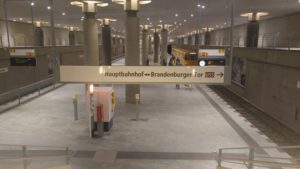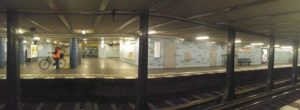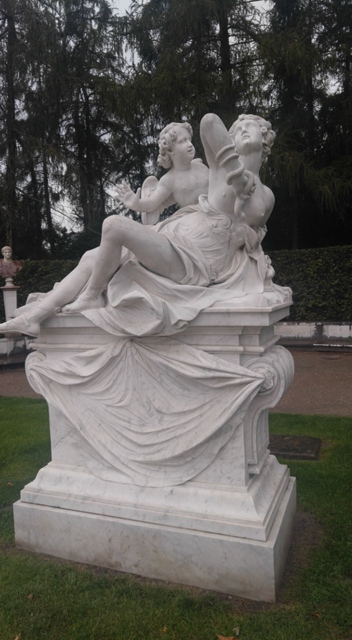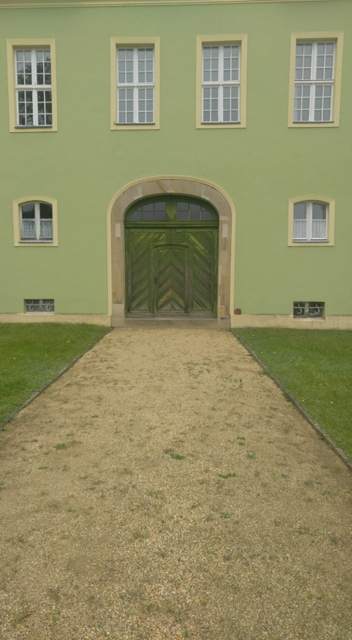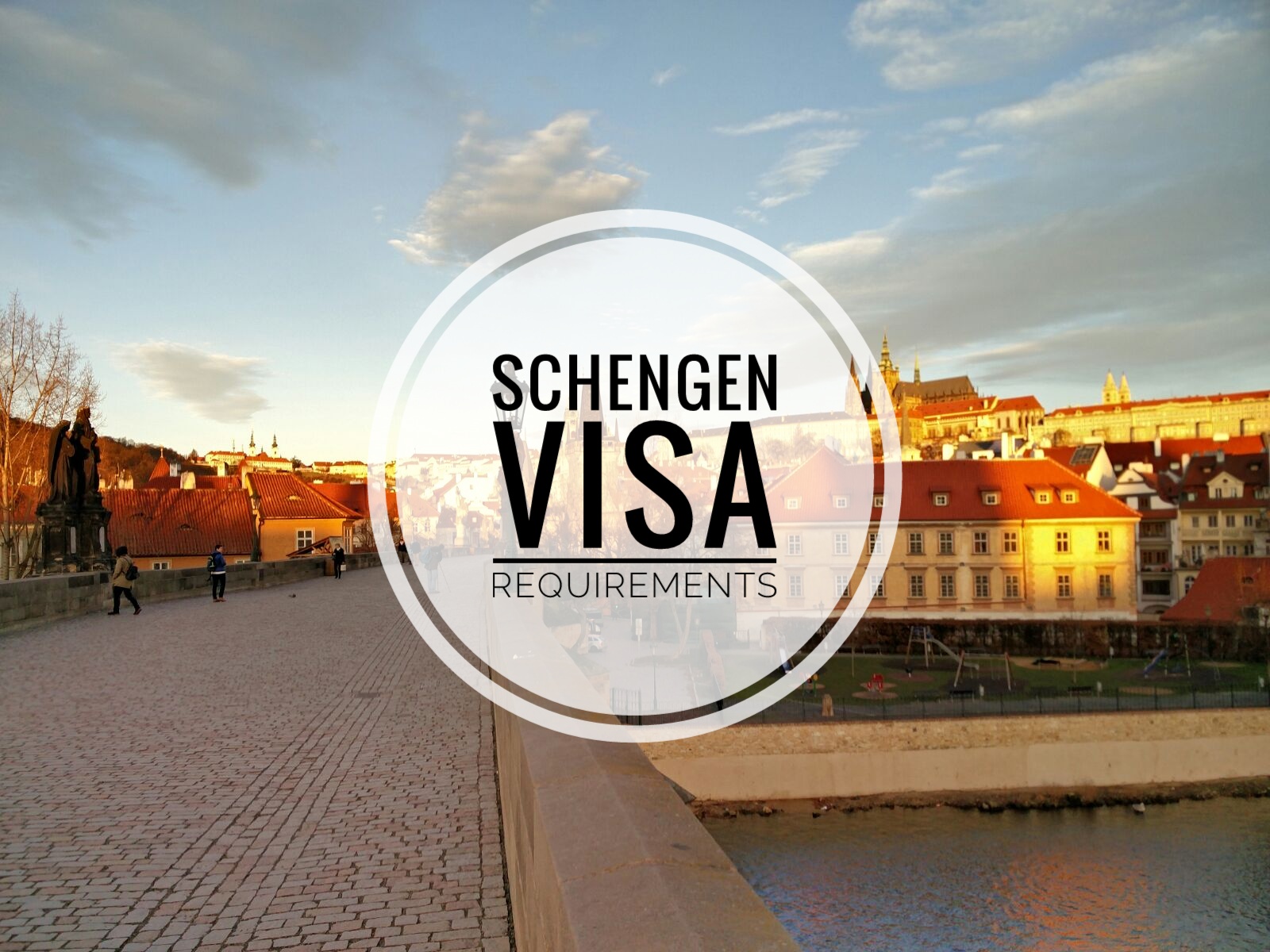
Central Europe Trip: 4 Nights in Germany
Germany was the doorway to our central Europe trip. We never planned for it to begin with this country. It just so happened that the cheap fare from Asia which I was able to book goes to Berlin. Henceforth, our central Europe itinerary started taking shape from this country.
Below are details about and photos from our trip in Germany. Some of the photos are in tiled layout. Clicking on these may enlarge the photo and show the caption, if provided.
ACCOMMODATION
We stayed in Germany for four nights. Our accommodation was at Titanic Comforte Mitte Hotel, which is conveniently located near the U2 line. Public transportation can be used going to the hotel from either of Tegel or Schönefeld airports. We also didn’t have any problem walking from our hotel to Brandenburg Gate. Given the space pedestrians have around the city, walking is pretty much enjoyable as long as you have a comfy footwear. The hotel offers buffet breakfast for 12 euro per head, from 7:00 to 11:00 on weekends and 6:30 to 10:30 on weekdays. Given the food and drink selection available and the convenience of having breakfast just by going down to the ground floor, we decided that the hotel’s breakfast is worth availing. Plus, we can still go back up to our room to brush our teeth before heading out! We booked a standard room – a small one but is well designed to maximize space and is also clean. We were satisfied with the room since all we needed was a place to sleep at after being out all day. A room for improvement is providing a comforter that is good enough to be shared by 2 people and better pillows. Another thing that would be nice to have is a coffee/tea making facility, either in the room or in a common area. Below are some photos taken from the hotel’s website.
PUBLIC TRANSPORTATION
A good public transportation system is available in Berlin. It is divided into three tariff zones – AB, BC, and ABC. From the center (and vice versa), the common places to visit that will need public transport are:
- Berlin-Tegel Airport – tariff AB
- Berlin-Schonefel Airport – tariff ABC
- Potsdam – tariff ABC
You can find the tariff zones (A: white, B: gray, C: dark gray) in here. Further discussion about Berlin public transport can be found here. A ticket is validated only once, before the start of the journey.
On our day of departure from Berlin, we didn’t have any problem taking public transportation to make it to our early morning flight. We left our hotel around 03:30 or 04:00 and took the U-2 and Bus X-9 to Berlin Tegel airport. Getting to the airport was easy and convenient.
Note that some train stations are NOT equipped with elevators. If that is a need, better research ahead. For example, if you need to get to a U2 station from Berlin Tegel airport, Google Maps will suggest that you alight at Ernst-Reuter-Platz. You’ll have to carry your suitcase and take the stairs in this station as there is no elevator. A better option is to get down on the next stop – Zoologischer Garten, a station equipped with an elevator. The website of BVG shows available accessibility in each station by checking through this link or by clicking on the station name in the journey planner results. Once you are in the stop’s information page, you can check the area map provided in the Downloads area to see the location of the stairs and elevator/s (see samples below).
PLACES WE VISITED
We had three full days to explore the city of Berlin. We took the free (tip-based) tour on our first full day. We went to a paid Potsdam tour on our second full day. We explored the city by ourselves on our last full day. Both tours on our first two full days were availed from New Sandeman Berlin. Note that you shouldn’t consider the “free” tours as totally free. You have the freedom to decide how much you feel the tour is worth, but the guide who took you around will give a certain amount to the company for each participant who joined his/her tour. Try to allot a few euros for these tip-based tours. Getting around is easy – you can walk or ride, whichever you prefer. To help in navigating, it’s best to have internet connection during your trip. Read this post to know how we did it for just 1 euro each day.
Brandenburger Tor (Brandenburg Gate)
One of the top attractions in Berlin, this landmark has seen much of Berlin’s history. It once symbolized the division between East and West Germany, and later symbolized the unification of Germany. The gate was constructed between 1788 and 1791 as an architectural statement during the sovereign of Friedrich Wilhelm II. The gate was designed by Carl Gotthard Langhans, while the Quadriga statue which adorned its top beginning 1793 was designed by Johann Gottfried Schadow. The Quadriga was originally designed with the goddess of peace, Eirene. She then became Victoria, the goddess of victory, after the victory over Napoleon. The gate was left damaged but still standing during World War II. It was jointly restored by the East and West Berlin governments. Several renovation projects were made through the years.
This place is easy to get to. We just walked from our hotel to get here. There’s also the Brandenburger Tor underground station by the square if you are taking the U- or S-bahn.
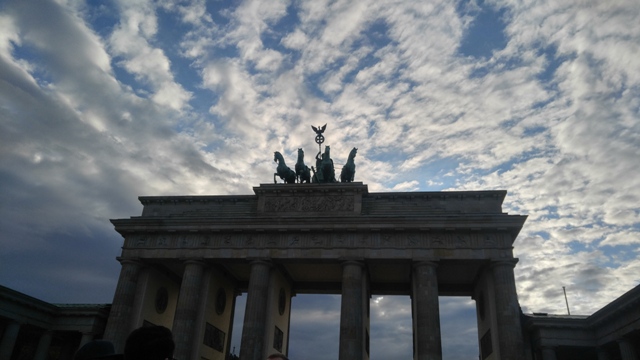

Pariser Platz
The meet-up point for New Sandeman tours start at the Starbucks shop in this square. This square can be found by the Brandenburg Gate. It was named “Pariser Platz” in recognition of the victory of the Prussian troops and its allies over Napoleon and the capture of Paris in 1814. During World War II, heavy artillery bombardment and air raids turned all surrounding buildings to rubble. Reconstruction of the buildings began after the reunification of Germany.
Currently surrounding and nearby the square are the following embassies: USA, UK, Russia, Hungary, and France. Also nearby are the Brandenburg Gate, the Academy of Arts, and Hotel Adlon. Did you see that news, years ago, about Michael Jackson dangling his baby by his hotel’s balcony? That was at Hotel Adlon.
Memorial to the Murdered Jews of Europe (Holocaust Memorial)
Very close to the Brandenburg Gate is the Holocaust Memorial. The memorial is comprised of 2,711 concrete slabs of varying heights, and with an uneven concrete floor. The memorial is accessible 24/7, so you can pay a visit anytime. It was made in honor of and to remember the Jewish victims of Holocaust. The information center underground, beneath the concrete slabs, is open from 10 a.m. until 7 or 8 p.m., depending on the month of visit. Entry is free of charge. To know about the information center’s schedule, visit this page.
We visited the memorial during our Berlin group tour. We went back to see the information center in our free time. An important thing to reiterate – please respect the memorial. The place can look good for your social media photo, but do try to imagine six million murdered Jews are in your frame when taking that snap. Maybe that will help in deciding what can be considered appropriate or not. The guide mentioned that the place isn’t safe from graffiti artists in Berlin. As such, the concrete slabs are painted with special kind of paint which makes cleaning easier in case someone decides to make them his/her canvass.

Führerbunker
Hitler’s former bunker in Berlin which is currently beneath an ordinary parking lot in the city, just a few steps away from the Holocaust Memorial. This is the place where he killed himself. When a tour guide brings you to this place, you’ll first wonder why. The place doesn’t look special at all because it isn’t considered special nor worth remembering. You won’t have any clue that something happened here years ago until the guide tells you about its history.
Gendarmenmarkt
A square surrounded by three beautiful structures – the Franzosischer Dom, the Deutscher Dom, and the Konzerthaus. The two cathedrals (doms) look quite similar to each other. We visited the square during our Berlin group walking tour. The guide gave us information about the square and its surrounding building as we stood near the sculpture of Freidrich Schiller. We did not enter any of the three buildings. It’s amazing to be surrounded by three great structures while standing in one big square.
The Deutscher Dom was originally built as a church in the 18th century. It was destroyed by a fire in 1943 and it wasn’t until 1982 when restoration works started, which continued until 1996. Religious services are no longer held here. The place became the exhibition house for Bundestag’s (German Parliament’s) “Milestones – Sidetracks – Setbacks” since 1992. The exhibition shows the parliament system’s history from the 1848 March Revolution to the present. The Franzosischer Dom was built in 1701 for the Huguenots, a religious group of French Protestants. The French Cathedral has a 40-meter-high viewing balustrade which can be reached through a staircase with 254 steps. The domed tower was added between 1780 to 1785 to each of the two cathedrals, which made them look identical. The Konzerthaus was built in the 18th century to serve as a theatre. It currently serves as a concert hall in Berlin where visitors can enjoy classical concerts.

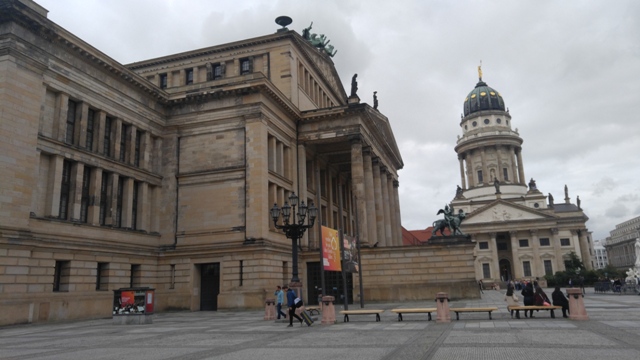

Luftwaffe Headquarters
A massive building that formerly served as a Nazi HQ and currently houses the Federal Ministry of Finance. This was also the place where thousands of East Berlin workers protested which eventually led to the 1953 East German Uprising. A memorial for the uprising can be seen outside the building, in front of the building’s mural.
The Berlin Wall
Berlin was physically divided by a wall, separating East and West, from August 1961 until November 1989. Our tour guide took our group to the remaining portion of the wall fronting the Topography of Terror. This is where she further told us the history of East and West Berlin. She also advised the group to visit the Topography of Terror during our free time.

Topography of Terror
The place is for remembering the terror and persecution brought about by Nazis. Photos with descriptions and videos with narrations can be found in the exhibition. It’s heartbreaking to read, see, and hear about the atrocities committed by the Nazis. We visited the place after our Berlin walking tour. Entrance is free and it’s open daily from 10:00 until 20:00. Visit its official website to learn more.
Checkpoint Charlie
One of the checkpoints during Cold War. The other are checkpoints Alpha and Bravo. Checkpoint Charlie is the most famous crossing between East and West Berlin. Currently, the spot shows a photo of an American soldier on one side and a Soviet soldier on the other. The wooden frame of the sign by the corner of the street near the guard house is the only remaining original structure. The wooden guardhouse today is just a replica and the soldiers there today are just actors. Taking photos with these “soldiers” will cost you. Better take a photo from a distance if you don’t want to pay for a photo.

Bebelplatz
Did you watch National Geographic’s Genius – the drama series about Einstein? If yes, that book burning in one episode happened in this square. It’s the book burning by the Nazis which happened on May 10, 1933. In 1995, a sunken library with white empty shelves was unveiled as a memorial to this event in history. The shelves in the library underneath the square can accommodate around 20,000 books which serves as a reminder for the 20,000 books burned by the Nazis. These shelves can be seen through glass plates set on the ground at the part of the square that is near the opera. The sunken library memorial was designed by an Israeli named Micha Ullman.

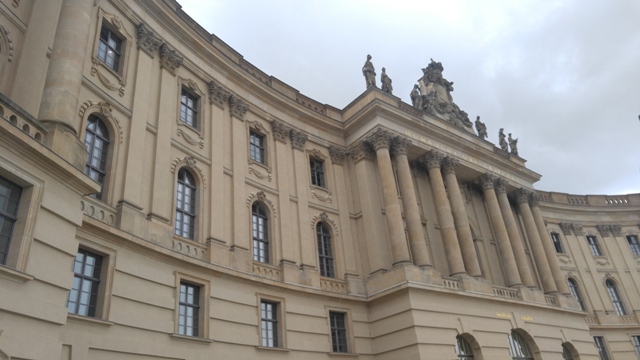

Reichstag Building / Deutscher Bundestag
We went here twice. A visit to the Reichstag Building is free but needs advance registration.You have three options when booking online:
- Lectures held in the visitors’ gallery overlooking the plenary chamber followed by a visit to the dome
- Guided tours followed by a visit to the dome
- Visit to the dome
Up to 3 dates and times (ie., 3 choices) can be selected when requesting for a schedule which you can arrange by order of priority. This gives the scheduler options in case your top choice is unavailable. Important information can be found here while online registration can be done here.
We wanted to do the guided tour and get a chance to watch the sunset at the dome. When it was time to register, the schedule available for the guided tour starts after sunset. So, I ended up making two registrations for us – one day for dome only with a schedule timed with the day’s estimated sunset and then the guided tour with dome access on the next day. The guide will be with the visitors during the tour inside the building and will bring and bid goodbye to everyone at the dome. For the dome, audio guides are available. After the guided tour, we didn’t go through the dome again since we already visited it the previous day. We just headed straight to the elevator which leads to the exit.


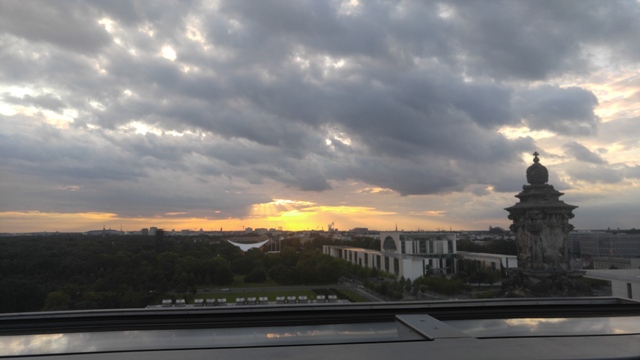
Soviet War Memorial and Tiergarten
We went to these places before our scheduled visit to the Reichstag Building. These three attractions are close to each other. The Soviet War Memorial is a commemorative piece for the Soviet troops who fought and fell in 1945 for the battle of Berlin. An estimated 80,000 Soviet Army soldiers lost their lives in this fight. The Tiergarten is a park in Berlin where you can take a walk, relax, or be active (run, bike, etc). It used to be a royal hunting ground which was turned into a public park in the late seventeenth century. We walked around the park in the afternoon, before our second visit to the Reichstag.


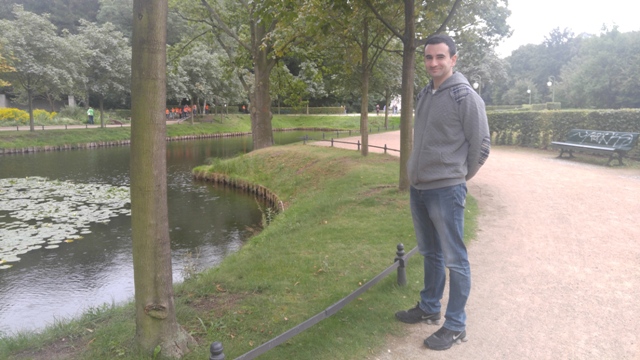
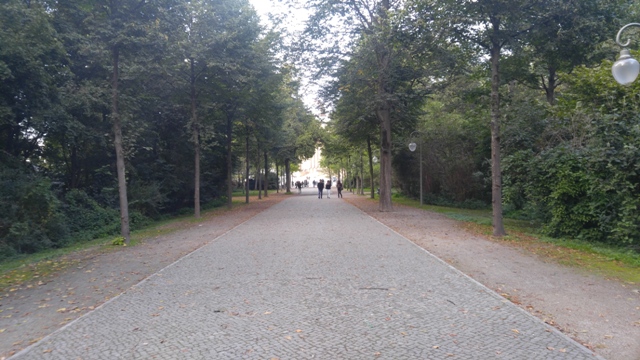


Berliner Dom (Berlin Cathedral)
A massive and impressive structure near the museum island. I was mesmerized by the sound of its bells as we were walking towards it. There is an admission fee if you’d like to see the inside of the cathedral. The outer walkway of the cathedral’s dome gives visitors a great view of Berlin. You’d have to climb 270 steps to get to the outer walkway. I assure that the view is worth the climb.
DDR Museum
At the back of the Berlin Cathedral is the DDR Museum. The exhibition in the museum provides visitors a glimpse into the life in the former East Germany. Igal bought our tickets online, which was a good decision because we were able to avoid the line. We just went straight to the entrance for online ticket holders where the ticket’s QR code can be scanned from a smartphone. Visit DDR museum’s website to learn more about it or if you’d like to buy online tickets.
Marienkirche (St. Mary’s Church)
One of the oldest church in Berlin. It’s located in Alexanderplatz, beside the TV Tower (Berliner Fernsehturm) and near the Berliner Dom and DDR Museum. We went to see its interior after our visit to the DDR Museum.
Museum Island
The place where you’ll see a handful of couples having their wedding photo shoot and, of course, the museums. We didn’t go inside any of the five museums in the island. We just took a walk around the island.


East Side Gallery
A 1.3 km long open-air art gallery created at the longest remaining section of the Berlin Wall. The gallery was made by 118 artists from 21 countries. Regular efforts to restore the place is done considering that it’s exposed to weather. We went to the place by taking the train. We walked along the street of Mühlenstraße to see the entire gallery. On the way back, we walked on the other side of the wall – the river side. Beware of the shell-game scam when you visit.
Potsdam
We availed this tour from New Sandeman. As mentioned earlier, a tariff ABC ticket is needed when visiting Potsdam from the center of Berlin. We decided to purchase a day ticket for 7.70 euro each which we were able to use for multiple transfers for the entire day in Potsdam and in the city center. Single ticket is 3.40 euro each. We visited the following places during our time in Potsdam:
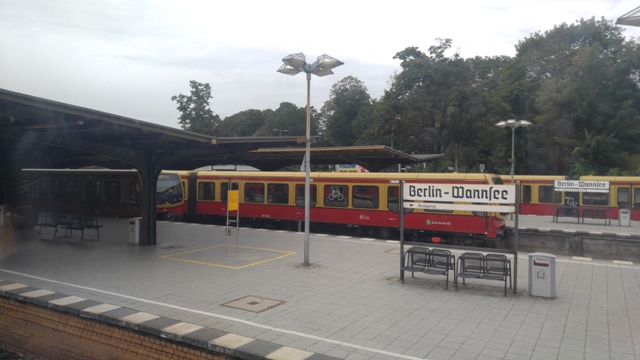
Alter Markt (Old Market Square) – our first stop in Potsdam. The square is surrounded by St. Nikolaikirche (St. Nicholas Church), Potsdam Museum, Museum Barberini, and Landesrechnungshof Brandenburg.
Glienicke Bridge (the Bridge of Spies) – during Cold War, this bridge separated West Berlin and East Germany. It was used as a point of exchange for secret agents who were taken as prisoners by the other side.
Schloss Sanssouci – considered as the Versailles of Germany. The site was built between 1745 and 1747. It has an impressive landscaped park. We didn’t go inside the Palace, and just enjoyed the beauty of the park.
Schloss Cecilienhof – built from 1914 until 1917 for the use of Crowned Prince William and his wife, Cecilie von Mecklenburg-Schwerin. This place is considered historical because of the Potsdam Conference held here in 1945.
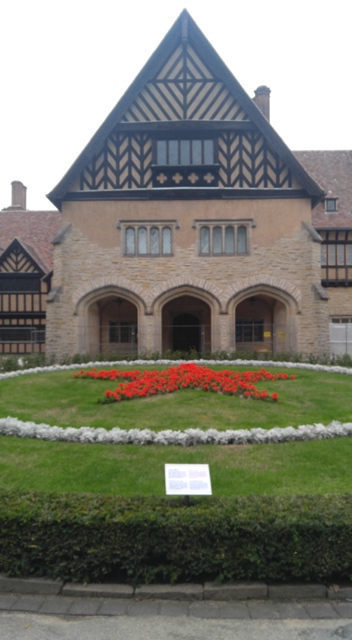
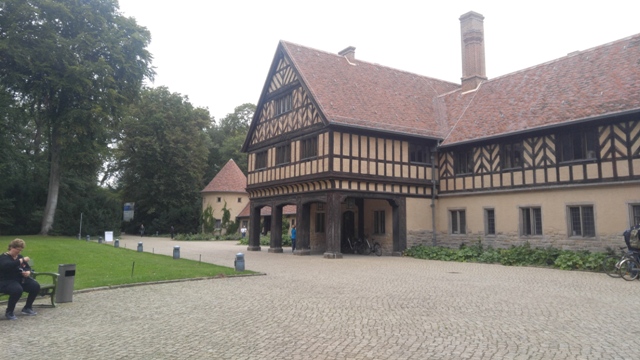
Neuer Garten (New Garden) – designed as a modern version of the Sanssouci gardens covering 102 hectares

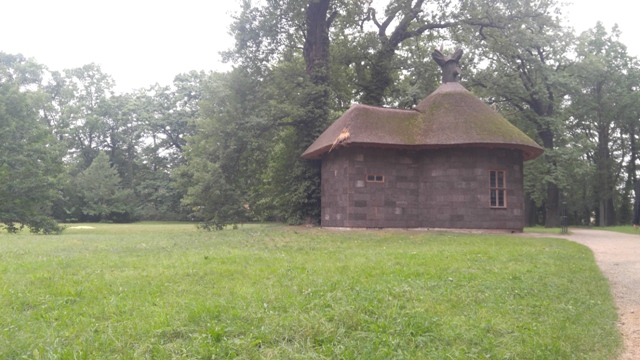
The Dutch Quarter – part of the town which is full of shops, cafes, and restaurants. The place was meant to look like Netherlands in order to make the Dutchmen hired as craftsmen to feel at home in Potsdam. There were 130 brick houses built in this area in mid-18th century.
Potsdam’s Brandenburger Tor – located at the western end of Brandenburger Straße, this is the arch erected to celebrate the triumph in 1770 with the seven years war.

Church of Peace – a Protestant Church located within the palace gardens of Sanssouci

FOOD PORN!
Here are photos of some of the food we enjoyed in Germany. We always had beer! We normally had just two meals in a day during our Euro trip – breakfast and dinner.
First night at Weihenstephaner
Second night at Aufsturz
Third and last night at Dicke Wirtin
I had a great time in Berlin and Potsdam. On one hand, there will be so much wonder and amazement on architectures that can be seen around the city. On the other hand, you’ll feel varying emotions with all the history you’ll hear and read. You’ll wonder how someone can be so evil. You’ll be relieved that those dark times are over. You’ll think and hope that people, somehow, have learned from history and that it won’t ever happen again.
I was amazed with how good Germans are at rebuilding structures into how they exactly looked like prior to destruction. I enjoyed walking around the city. It was nice to have the ability to easily move between two points either by walking (if it’s not too far) or by public transport. I love the food. I love their wheat beer!
Have you been to Berlin? What’s your impression of the city?
Other Europe Related Posts:
How We Stayed Connected in Europe for Just 1 Euro a Day
25 Days in Central Europe: Hows and Whys
Sleeper Train from Budapest to Prague
Booking Budapest-Prague Sleeper Train Using Hungarian Railways Website
Modes of transportation from Zagreb to Budapest
Applying for a Short-Term Schengen Visa at the Czech Republic Embassy in Manila










